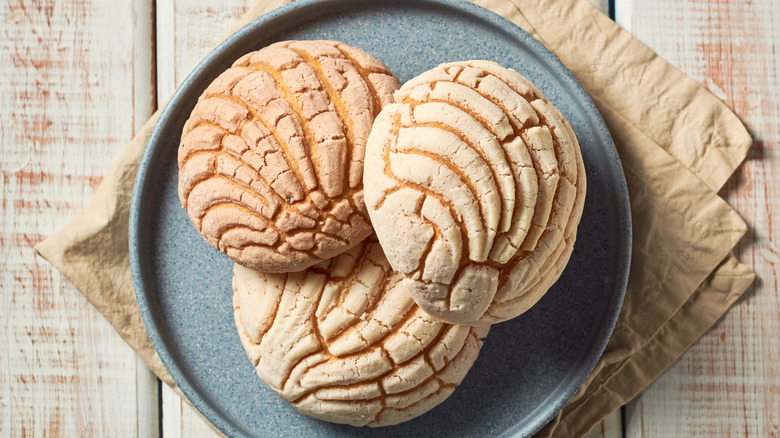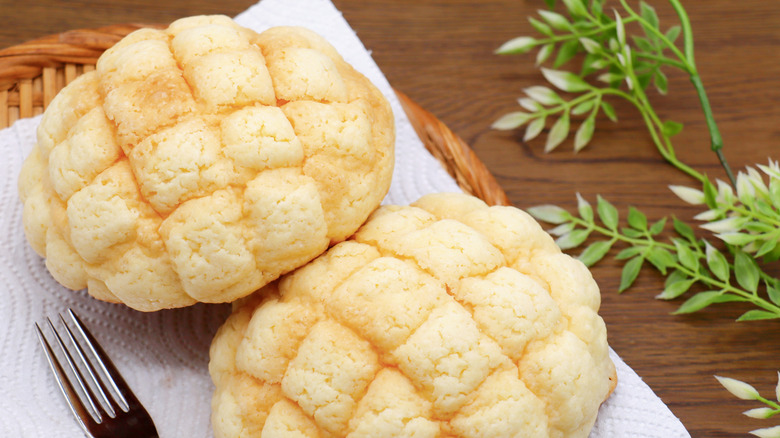The Key Differences Between Melon Bread And Conchas
Although the Japanese melon bread and Mexican concha stem from opposite sides of the globe, they share similar tasted, look, and charm. Both contain a soft, dense, mildly-sweet interior with a crumbly crust. Both conchas and melon bread (also called melonpan or melon bun) are round with a scoured pattern. Besides their countries of origin, what truly sets these beloved pastries apart are variances in namesake, ingredients, sweetness, and flavor.
Both were named because of their appearance. Conchas have a shell-like presentation, created by scours across the entire bun (not unlike the slashes cut into a loaf of sourdough). Meanwhile, melon bread has a grid-like pattern similar to the skin of a melon. Conchas are frequently baked with cinnamon and typically only have sugar in the cookie crust, while melonpan is the sweeter of the two. As for flavor, conchas typically come in chocolate, vanilla, and strawberry flavors, melon buns' flavors have more variety and can be inspired by popular Japanese flavors including melon and matcha. Melon bread is also sometimes filled with sweet cream; conchas are not.
Both need to be proofed, while their crumbly streusel-style finish is thanks to a cookie crust. Both are baked, usually around 350 degrees Fahrenheit; melon bun is generally ready in 15 minutes, while larger conchas will usually take a bit longer. You can make them on a classic baking sheet, but baking with a Dutch oven may prove to be key if you want your buns to be extra moist and soft.
The culinary and cultural origins of melon bread and conchas
Comparing melon bread and conchas might make one wonder if these cultural classics have any shared roots. Conchas are believed to have emerged first in the 1820s, after French settlers in Mexico introduced a concha progenitor to Indigenous people. Although initially unpopular among Mexicans, it rose to fame after locals began to dip the buns in hot chocolate. In the present day conchas have gained popularity throughout much of Latin America and are enjoyed regularly, including being incorporated during cultural holidays like the Day of the Dead.
The origins of melon bread are more mixed, but one common belief is that an Armenian baker in Tokyo developed this sweet bun after taking inspiration from French, Russian, and Austrian baking techniques, although he did not dub the bun as melonpan. Some historians theorize that conchas were actually introduced to Japanese people after World War II, who took the Mexican pastry and made it their own. Others simply hypothesize that these lookalike pastries were invented independently as a result of both regions being introduced to European bread. Akin to conchas, melon bread has become well-received throughout Asia, particularly in Taiwan, Hong Kong, and China.

